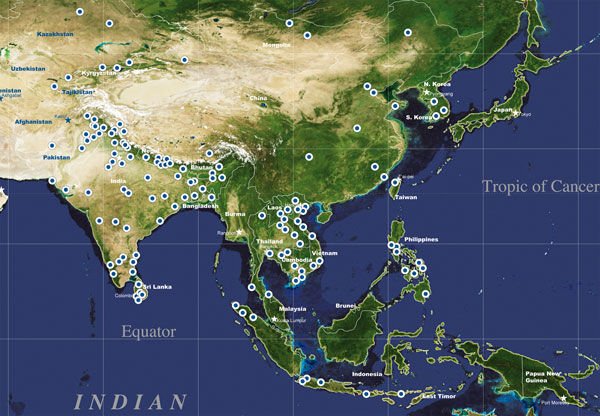Sponsor an Asian Child!
Almost a third of all of SOS Children's work is in Asia, with India the single largest country. Asia has a large population, much of it very poor. Many of us have travelled in India and seen the plight of some children there. The first Asian SOS Children's Village was built in Daegu in Korea in 1963. The funds to build the village were raised by a famous "Grain of Rice" campaign, where someone returning to Europe having seen the street children in Korea brought back a back of rice and sold each grain for a few pence each. At the end of the 1960s, the largest SOS Children's Village in the world was built in Go Vap in Vietnam. Today the largest village with some 49 family houses is in Northern India for Tibetan refugee children. SOS Children's locally rooted approach has worked very well in Pakistan and India. In both of these countries almost all of the funds for large operations are raised from the local population (in total SOS Children raises more than $50m a year in developing countries, which if nothing else shows how highly locals rate our work).
Locations in Asia with child sponsorship

This map shows the current location of sponsored children in Asia. If you would like more information about child sponsorship available in Asia, take a look at where to sponsor an Asian child.

 Return to Schools Wikipedia Home page…
Return to Schools Wikipedia Home page…
